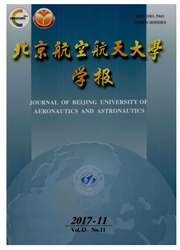

 中文摘要:
中文摘要:
认为低反力度是提高跨声速风扇/压气机进口级气动负荷的必然结果.通过气动负荷系数和反力度的定义,得到了反力度随气动负荷系数的变化规律,并给出了气动负荷系数的两个临界值.以成功设计并实验验证的某单级高负荷风扇为基准,通过数值模拟对4组跨声速风扇转子方案进行比较研究.发现随着气动负荷系数的提高,转子轮毂区的气动参数分布发生了显著地变化.认为静子的展向跨声速来流是高气动负荷跨声速风扇进口级设计面临的一个问题.通过讨论,认为静子跨声速来流问题可能通过已有的设计手段解决.从研究方案中诜取了一个最优的单级风扇方案,其气动负荷系数达到0.53,并分析了其三维粘性流场.
 英文摘要:
英文摘要:
Lower reaction was concluded to be a necessary consequence of an increased aerodynamic load of a transonic fan/compressor inlet stage. Through the definitions of aerodynamic load coefficient and reaction, the rule of reaction changing with aerodynamic load coefficient was acquired, and two critical values of aerody-namic load coefficient were given. Based on a successfully designed and tested single stage high load fan, four transonic fan rotor designs were compared through numerical simulation. It was found that with the increase of aerodynamic load coefficient, the distribution of aerodynamic parameters in rotor hub region was changed re- markably. Transonic incoming flow to the stator is determined to be a problem in the design of a high aerody- namic load transonic fan inlet stage. Through discussions, it's considered that the problem of transonic incoming flow to the stator could be solved by existing design methods. The best design of the single stage fan was picked up, with its aerodynamic load coefficient reached 0.53, and its 3D viscous flow field was analyzed.
 同期刊论文项目
同期刊论文项目
 同项目期刊论文
同项目期刊论文
 期刊信息
期刊信息
